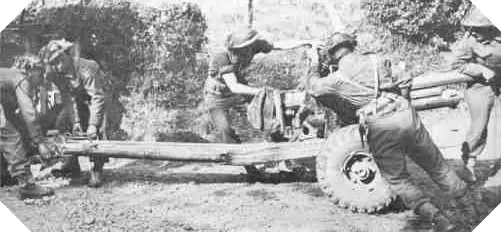Ordnance QF 6 pounder anti-tank gun
History, technical sheet and photo

Ordnance QF 6 pounder anti-tank gun history
British tanks are considered inferior to German tanks, hence the willingness of the British command to improve and strengthen its field artillery.
The 57 mm British Mark II gun is intended to replace the 40 mm (dating from 1936) in order to improve mainly the rate of fire. English engineers began studying this new model in 1938.
Used for the first time in April 1942 in North Africa, the 6-pounder guns (international caliber: 57 mm) proved effective against German tanks in flank attacks. The armor of the Tiger or Panther tanks maintains its advantage. A few months after it was put into service with the British forces, English engineers developed a new shell with an increased penetration force, capable of passing through larger armor.
Despite this, the performance of the 57 mm Mk II gun does not fully meet the expectations of the British forces. Engineers continued throughout the Second World War to develop improved versions using the same structure as the Ordnance QF 6 pounder anti-tank gun.
The strengths of this gun are its small size and maneuverability. It is used by British paratroopers during the Battle of Normandy, being transported in the early days by gliders and offering an important anti-tank support to the Allied troops (especially for American soldiers). It was used by English soldiers until the 1960s.
Ordnance QF 6 pounder anti-tank gun specification
Creator/Users: Commonwealth
Denomination: Ordnance QF 6-pounder 7 cwt
Caliber: 57 mm
Shell weight: 2,9 kg
Effective firing range: 900 m
Maximum firing range: 4 600 m
Elevation: from -5° to +15°
Traverse: 45°
Weight: 1,140 kg
